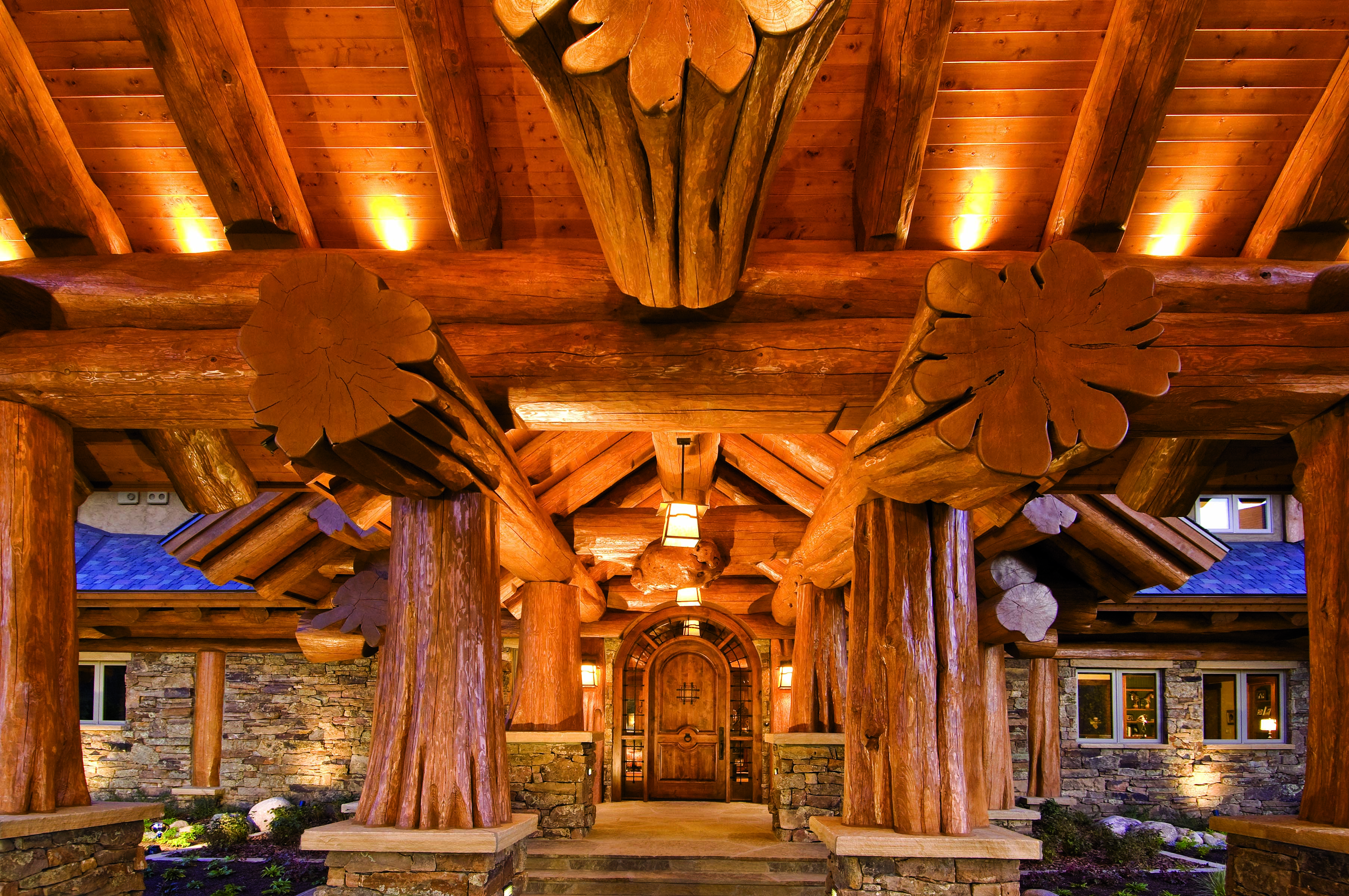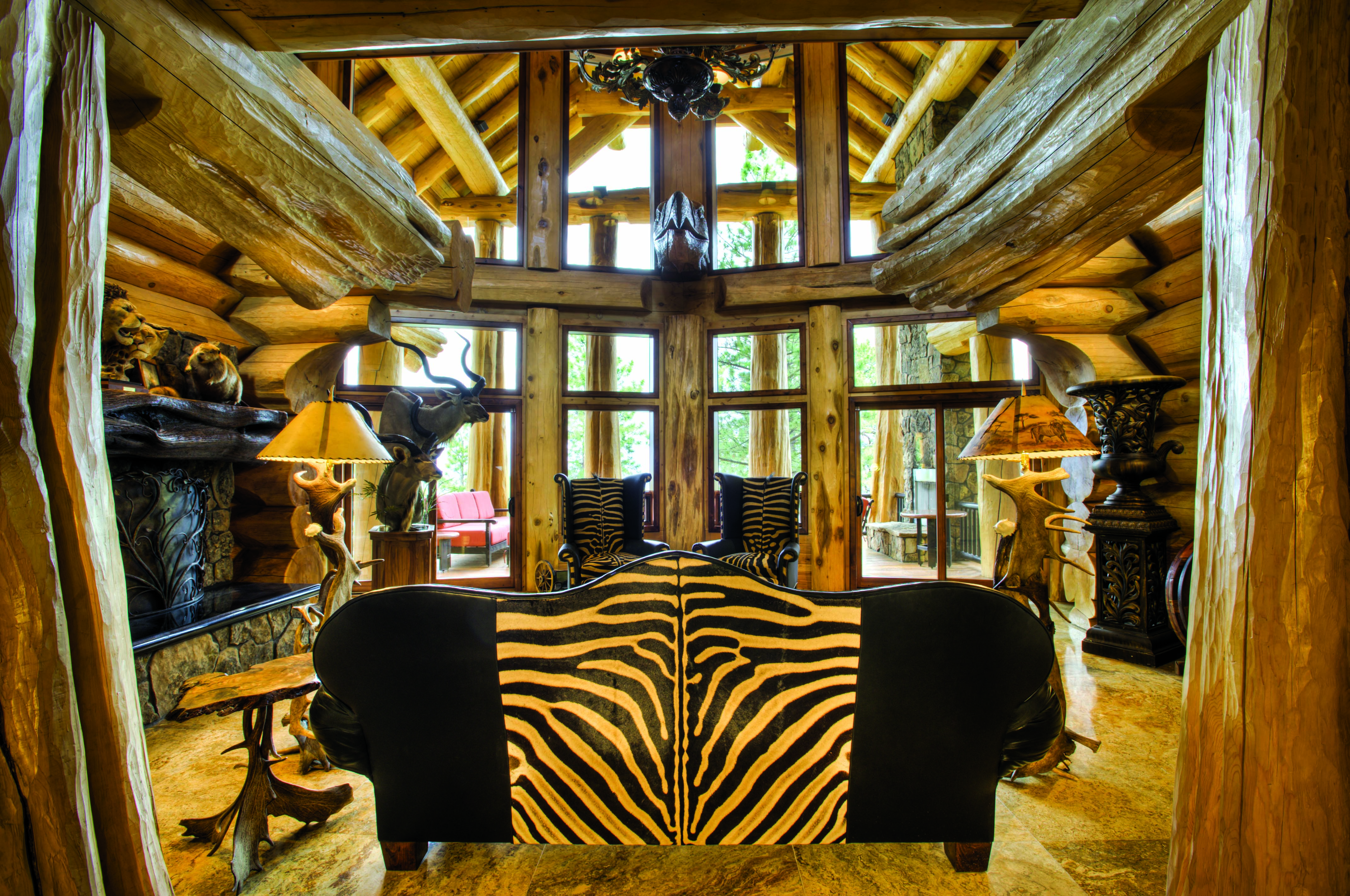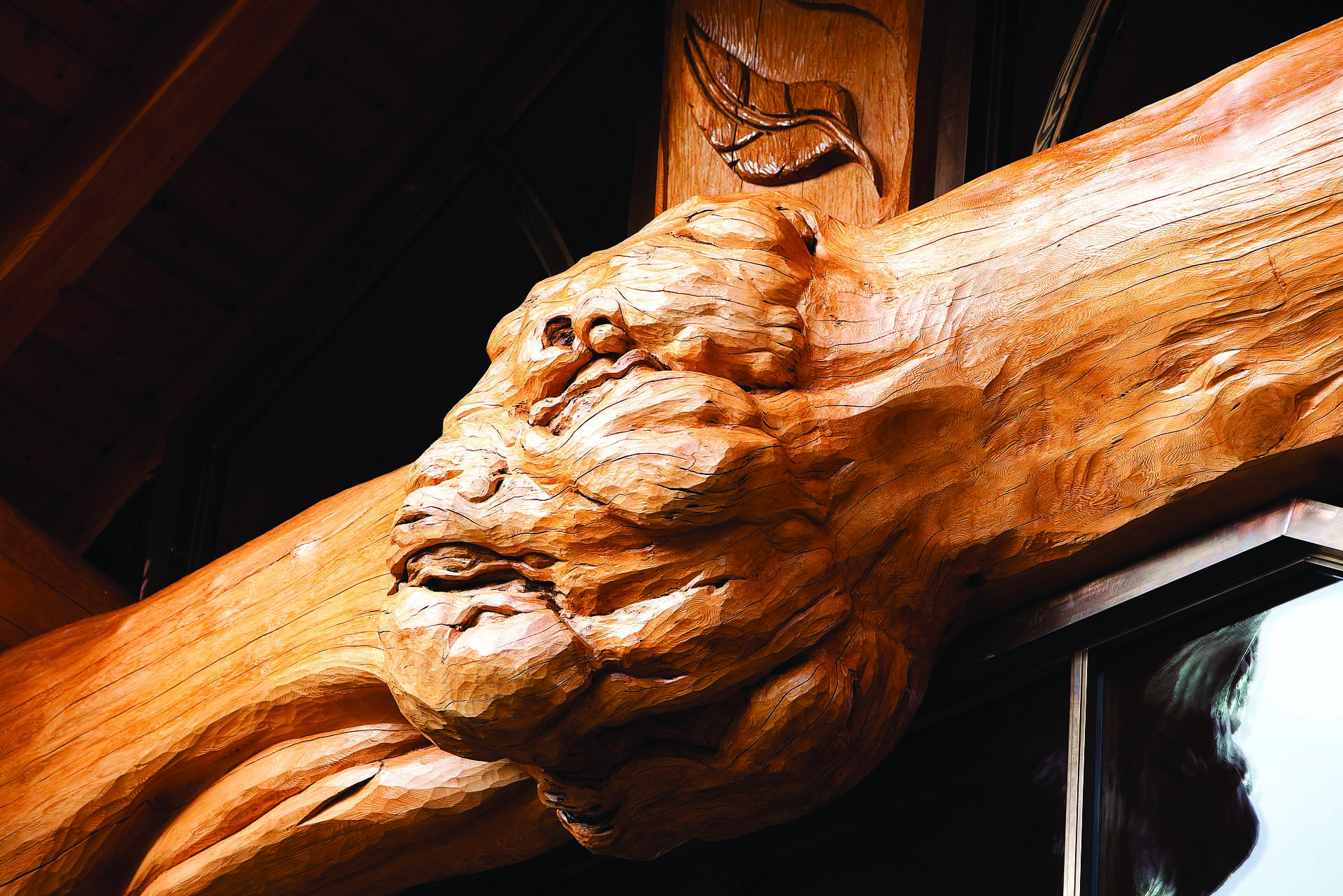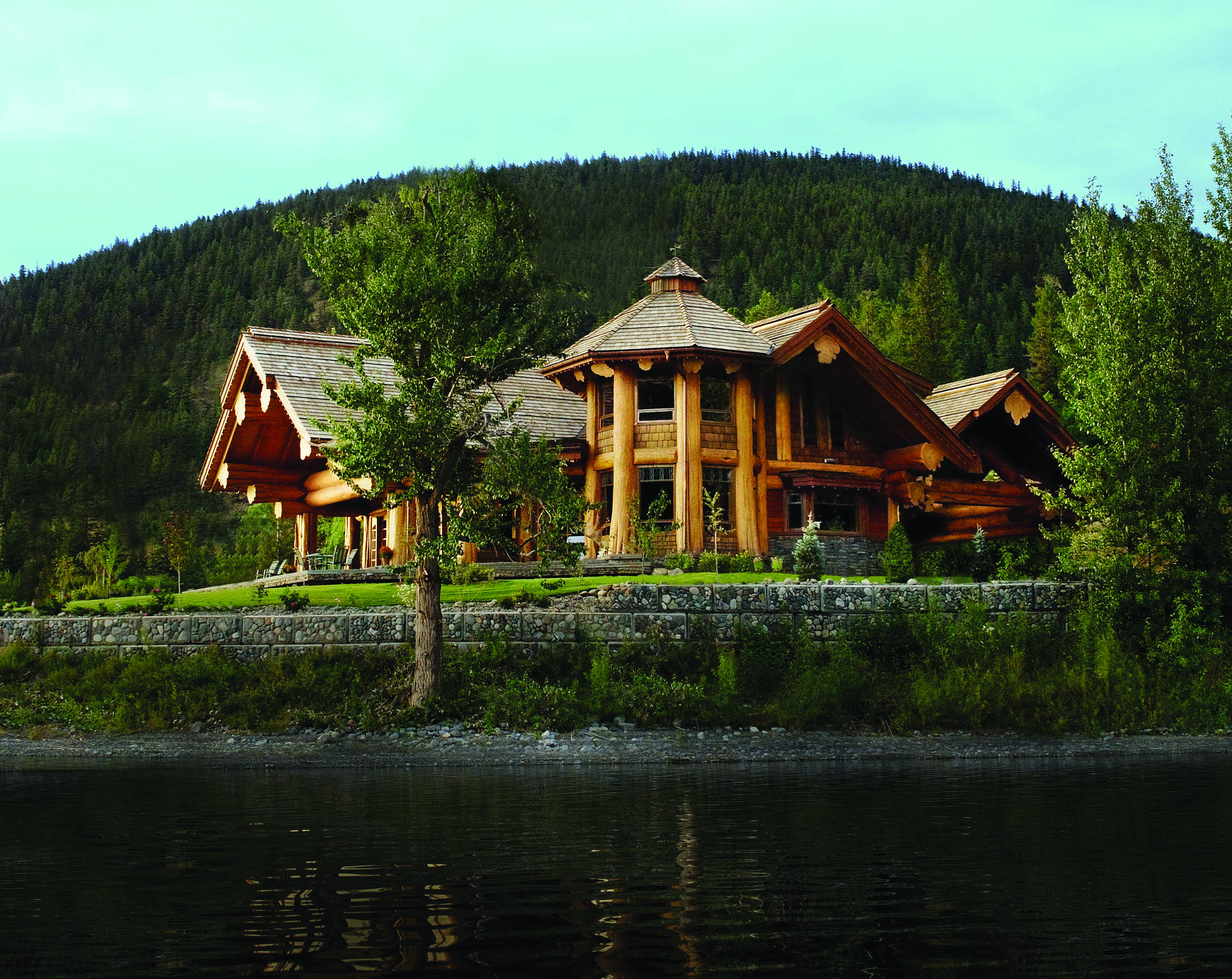
01 Dec Rendering: Legacies in Wood
If you can dream it, Pioneer Log Homes of British Columbia can build it. From a tiny log cabin tree house, to the largest log structure in the world — a 117,000-square-foot estate — the company’s team of five designers and 100-plus employees, including master logsmiths, has the vision and resources to transform ideas into lasting reality.
“Clients put a lot of faith and trust in us to help realize their vision,” says Roy Keats, a Pioneer architect for more than 15 years and the manager of design and architectural services. “Many of these clients have been thinking about building a log home for a long time, some of them for decades. You feel a great responsibility to help them realize that vision. And that is my mandate, from design inception to final construction drawings. We are also skilled at combining efforts with other architects and designers to bring a plan, and a vision, to completion.”
In 1973, Bryan Reid Sr. established Pioneer Log Homes in Williams Lake, British Columbia. His brother, André Chevigny, joined the firm in 1982 and the two have worked side-by-side, building the business over three decades. What started as a family business has grown into an internationally recognized company handcrafting log homes and delivering structures around the globe. Pioneer builds 40 to 60 structures annually from three facilities in Williams Lake, British Columbia. Work ranges in size and scope, but the majority of its structures are 2,000 – 5,000-square-foot homes, which take roughly 16 to 20 weeks to pre-build.
With roots in Old World Europe, Pioneer’s approach to log-crafting unites traditional Swiss timber joinery with modern log construction methods. “Within the field, there’s definitely a movement toward more complexity and away from a simple log cabin,” says Don Gesinger, who’s designed homes for Pioneer for nearly 25 years. “Over the last 15 years, more log homes are built as log post-and-beam structures as opposed to full-scribe, horizontal log work,” he says. Keats agrees, noting that this progression takes a more modern approach to the traditional log home aesthetic. This approach — what Pioneer refers to as “fusion design” — includes blending additional elements and materials like stone, copper and timber components.
Log post-and-beam construction uses massive round, and squared-off log components which are carefully fitted for vertical and horizontal placement. This construction implies a respect for the materials as the exposed frame of the house becomes the primary element of the home’s design. Log post-and-beam construction also allows for more design flexibility in terms of allowing more natural light through larger windows, choosing interior and exterior wall finishes, and so on, explains Keats. Along with high-vaulted ceilings, Pioneer utilizes this type of construction to create large and airy living spaces that showcase the natural beauty of its wood.
All Pioneer homes are built with Western red cedar, preferred for its straight grain and stability. Each log is measured, rough-peeled and air-dried from one to four years, ensuring the stability and longevity of the structure. The company was established in Williams Lake because of nearby spruce, fir and Western red cedar trees: At any time, Pioneer has some 250 loads of Western red cedar, in addition to other fine-quality logs, at its facility.
“Because of their incredible log inventory, they have the ability to take on any project and take it to the highest level of log and timber construction,” Gesinger says.
But access to materials wouldn’t mean much without the craftsmen to build the structures, and Pioneer employs “amazing craftsmen,” notes Gesinger. He relies on the integrity, engineering skill and experience of the master craftsmen.
There are three main phases in the building process: design and planning; log and timber construction; and reassembling the home on site. It all starts with the initial design concept from a client, and blueprints evolve from a series of conversations and examples of other log structures the client likes.
“The best part of the job is meeting our clients … It’s always an honor to be part of such special creations and dreams. The challenge is making log and timber components work both structurally and aesthetically. Synergies of both function and beauty are our goals,” says Donna Fitzel, a designer at Pioneer for more than 13 years.
Preliminary construction of each log structure takes place at the company site. Once the structure is complete, the logs are tagged and transported to the building site, where Pioneer craftsmen reassemble the structure, adding finishing touches, including windows, doors and cabinetry.
Homes can be customized right down to log selection. Feature pieces, special archway cuts and accents such as hand-carved animals, provide unique elements for each client. Massive character logs with wide root bases and gnarled features can be strategically placed as focal points, both structurally and aesthetically. Ultimately, Pioneer’s design criteria honors the client’s desires so that no two homes are ever the same.
“Just like art, you can’t rush it. It is something that just takes time, and that is very important to us,” adds Keats. “Mother nature creates the beautiful logs and timbers. All of us designers and master craftsmen have the great opportunity to arrange it. We have the utmost respect for the beautiful Western red cedar logs,” he says.
With generations of knowledge, the team at Pioneer produces homes that are as unique as the trees and clients that inspire them.
- This log post-and-beam home includes a three- story stone tower with a log spiral staircase inside. Stone bases and copper-clad windows and doors are added to complete the home’s unique appearance. Photo: Michael Heroux
- Located on a Colorado estate, this 9,000-square-foot home includes a Western red cedar spiral staircase that spans three stories and is surrounded by glass.
- With approximately 2,000 square feet of exterior decks, this log home takes full advantage of Utah’s mountain top views.
- Unique natural burls can be incorporated — and hand-carvings added — for a personal touch. Keats said they try to incorporate at least one carving in each home.
- Logpost-and-beam construction allows for more flexibility in the home’s design; here, the architects included expansive views and utilized natural light.











No Comments